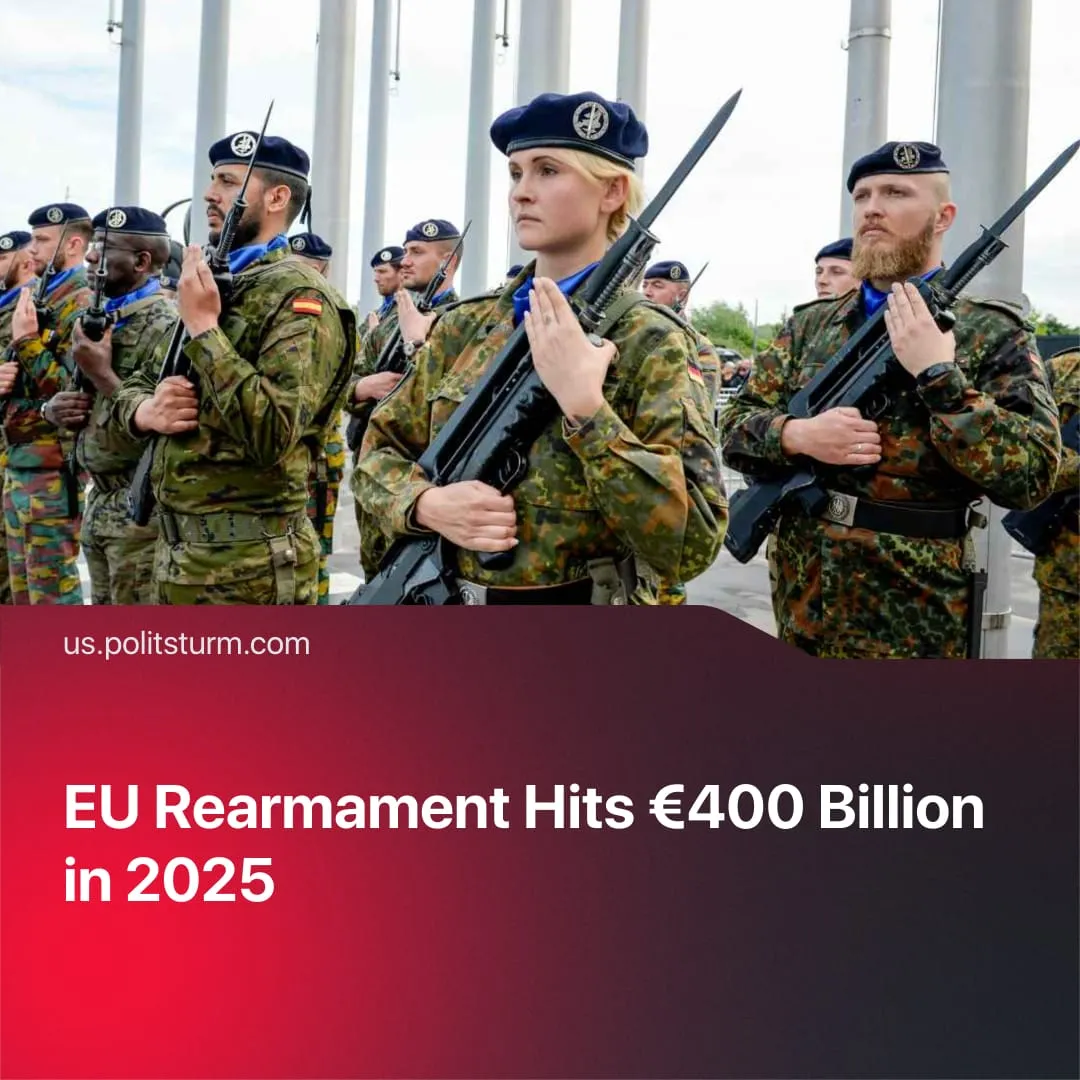The European Union is projected to spend almost €400 billion on rearmament this year. Where is the money coming from?
Details. EU defence expenditure reached €334 billion in 2024, up from €218 billion in 2021 – an 80% increase over three years, the sharpest rise in EU history. It is expected to reach roughly €392 billion in 2025.
► By 2030, the EU “Readiness programme” authorises member-states to mobilise up to €800 billion for new arms factories, drone hubs, and ammunition plants.
► Germany plans to spend €90.6 billion on defence in 2025 and invest €650 billion in rearmament over the next five years, combining regular defence spending with €377 billion allocated for new weapons procurement, financed through additional borrowing and relaxed fiscal limits.
► In France, the military budget for 2025 is set at €52.3 billion, with plans to raise annual spending to €64 billion by 2027, alongside major procurement increases in nuclear, air, naval, cyber, and drone capabilities.
Context. The rapid growth in EU defence expenditure is being financed largely through additional borrowing. This increased debt burden, in turn, is driving EU member states to implement significant cuts or restraints in pensions, healthcare, education, and other public services. At the same time, temporary flexibility under the EU’s revised fiscal framework allows higher defence spending within set limits.
► Global union federation, IndustriALL Europe – which represents over seven million industrial workers in thirty-nine countries – warns that member states will collectively remove more than €100 billion per year from public budgets to meet fiscal rules.
► Germany’s Chancellor Friedrich Merz warned that the welfare state “can no longer be financed,” underscoring pressure to shift resources toward rising defence needs. Similarly, Belgium has announced cuts to pensions, healthcare and civil-service budgets.
► In France, the government announced €40 billion in spending cuts for 2025, affecting pensions, hospitals, and education as part of its deficit-reduction plan.


